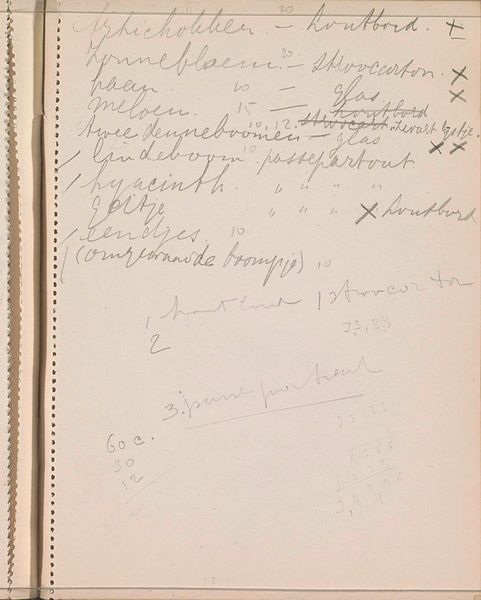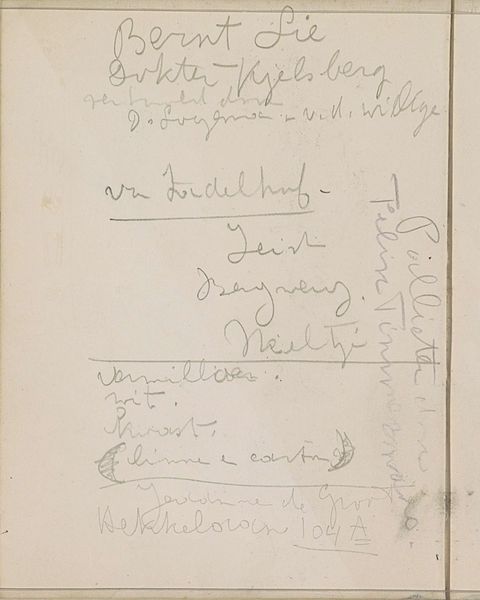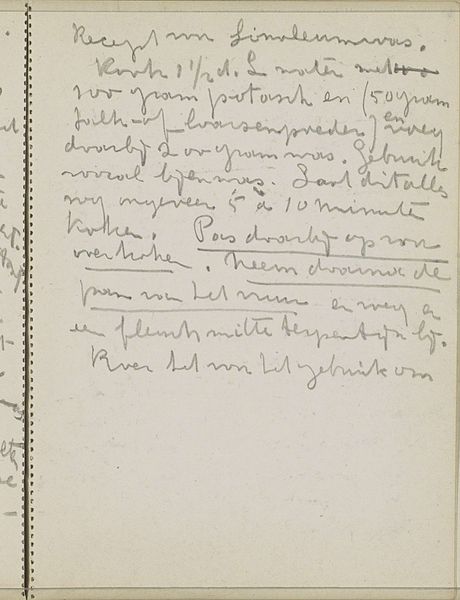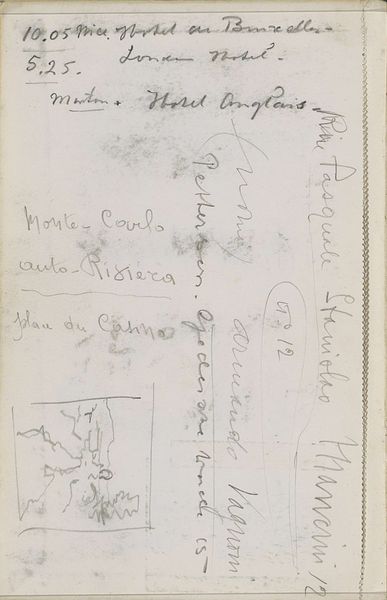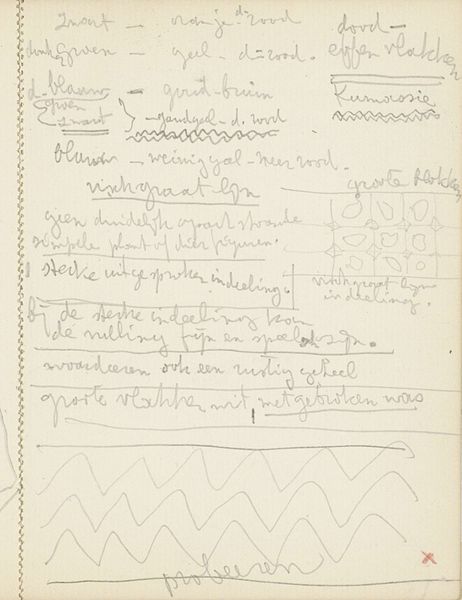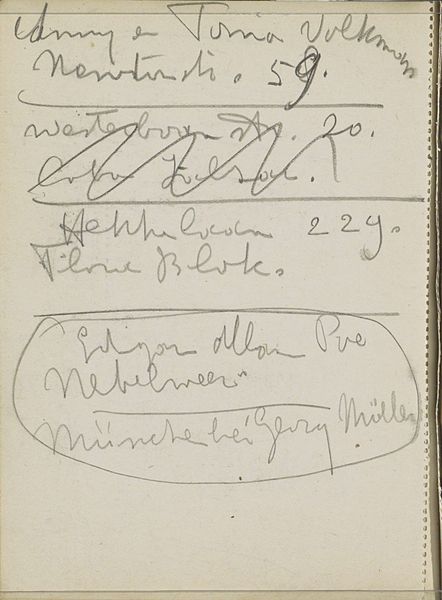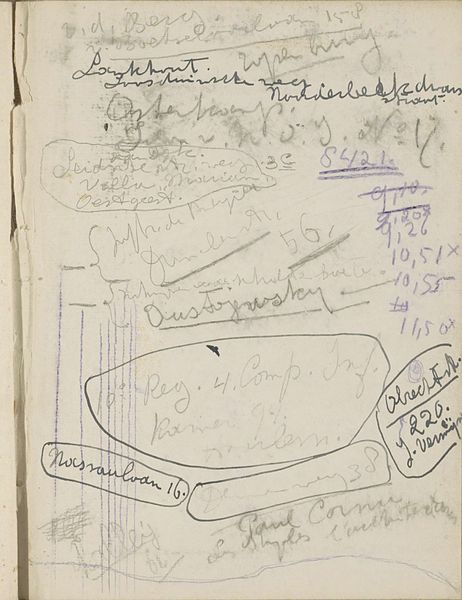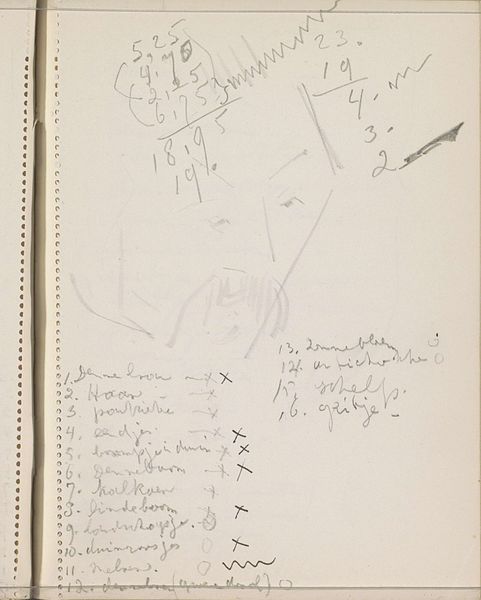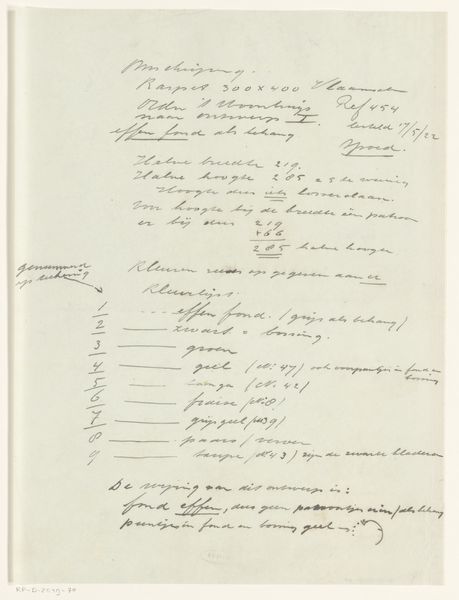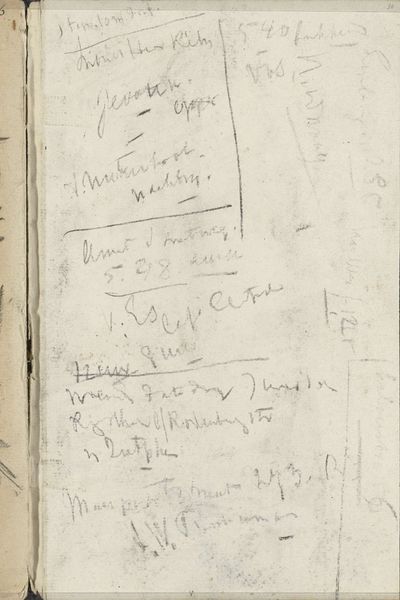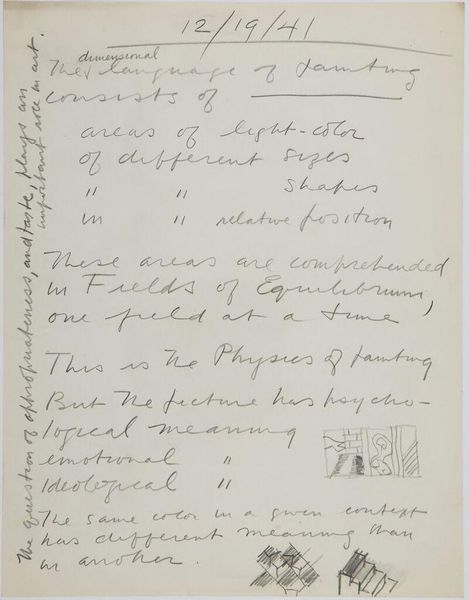
drawing, paper, pencil
#
drawing
#
aged paper
#
hand-lettering
#
old engraving style
#
hand drawn type
#
hand lettering
#
paper
#
personal sketchbook
#
hand-drawn typeface
#
geometric
#
pencil
#
pen work
#
sketchbook drawing
#
sketchbook art
Copyright: Rijks Museum: Open Domain
Curator: Gazing upon this, what catches your eye first? Editor: It feels like a quiet whisper from another time. There's an intimacy in these names and addresses, a fragility that hints at lives lived and places remembered, or forgotten. What can you tell me about it? Curator: This intriguing piece, titled "Namen en adressen," which translates to "Names and Addresses," hails from somewhere between 1906 and 1945. Rendered in pencil and ink on paper, it offers a peek into the world through the eyes—or rather, the sketchbook—of Reijer Stolk. You can find it here at the Rijksmuseum. Editor: The composition is really fascinating. The casual overlapping of script with loosely defined geometrical shapes create interesting visual patterns and hierarchy to emphasize the handwritten components of the piece. Stolk captured what’s in his head. What is that saying by Oscar Wilde? "I never travel without my diary. One should always have something sensational to read in the train." It feels almost like an unplanned inventory, but there is rhythm in that too. Curator: Absolutely! It feels deeply personal. Look at the looping script; the circling of the text gives these scrawls a real emphasis—perhaps like underlining or highlighting text in a modern textbook. And, yes, even in what might seem random, we see the artist's intent to capture a certain fleeting moment or idea. Editor: There is a compelling, perhaps coincidental resemblance to the conceptual and concrete poetry of the early and mid-20th century with these arrangements of addresses and names. While, Stolk most likely conceived this within a personal context, the visual resonances within art history still resonate. The contrast between the sharp geometry and flowing script make my mind wander—is Stolk trying to ground his world in a time and place? Curator: I like how you interpret that! Ultimately, isn't that what we all want—to find grounding in a chaotic world? Stolk's sketch provides not just names and addresses, but perhaps clues to his artistic practice or something more…human. Editor: Yes, "Namen en adressen" prompts reflection of these ordinary ephemera and Stolk's methods and mind. Now that's something to ponder.
Comments
No comments
Be the first to comment and join the conversation on the ultimate creative platform.
